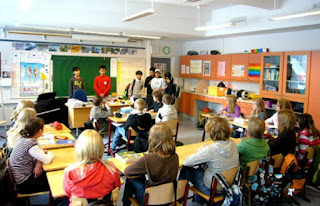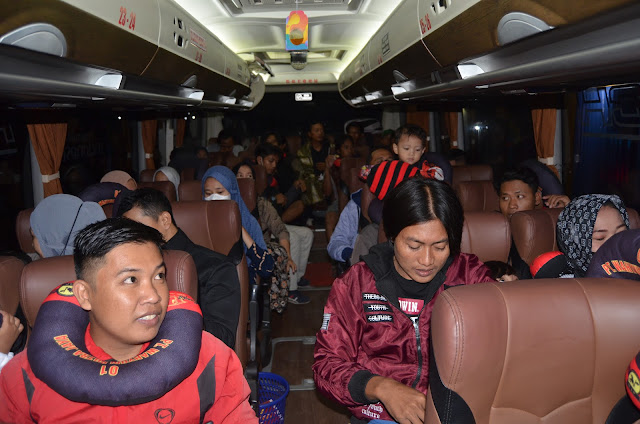Besides being known as the happiest country, Finland is also known as one of the countries with the best education system in the world. Based on the Education Rankings by Country 2021 issued by the World Population Review, Finland is in the third position of the country with the best education in the world. While in the first and second positions are occupied by China and Hong Kong.
Finland does not take first place in PISA's prestigious triennial index, but in the latest 2018 report Finland was the only country where students had high reading skills and high life satisfaction. PISA itself is a world-class assessment held every three years to test the academic performance of school children by the OECD (Organization for Economic Co-operation and Development).
Launching from New Nordic, this is greatly influenced by the fact that Finnish students have a balanced school life and free time which allows them to be more involved in various extracurricular activities. This balance culture then continues in work life that upholds work-life balance.
Quoting from Investopedia, in 2020, the three countries with the best education systems in the world are Finland, Denmark, and South Korea. It is measured by developmental level including early childhood school enrollment, test scores in math, reading, and science at primary and secondary levels. In addition, high school and college graduation rates as well as literacy rates for adults.
For some, the Finnish education system is a dream. Among these are the primary school learning system through games, short study time, no standardized tests, and free college fees for students from the European Union, European Economic Area (EEA), and Switzerland. In addition, the majority of teachers in Finland also hold a master's degree. In fact, elementary school teachers are required to have the degree. So it is not surprising that Finland is often referred to as a role model of education in the world.
There are several important factors that contribute to the success of the Finnish education system, including;
1. equal opportunity for all citizens to get access to free, inclusive and comprehensive education;
2. learning through games for children before entering primary education so that they can explore their natural creativity;
3. personalized learning by empowering each student's abilities. Students have an active role in what and how they learn to unlock their own potential;
4. there is no standardization test. Student learning is assessed through a variety of qualitative methods that focus on students' overall development and learning of soft skills rather than memorization skills and quantitative scores.
5. short study time at school (5 hours) and minimal homework (PR) given. Thus children have more time to play and do hobbies so they can develop soft skills outside of class;
6. supported by qualified technology. Much of Finland's national curriculum is phenomenal learning and develops a unique learning experience through innovative teaching and technology; and
7. an education system that promotes lifelong learning where no matter what age a person is, they can always continue their education according to a flexible system;
So how does the education system in Finland work?
Early Childhood Education Programs
Education for early childhood in Finland is designed with the concept of learning through play. Early childhood education (pre-primary school) begins when a child is 6 years old. However, if you want to start your child's education early, the Finnish government also offers an Early Childhood Education and Care (ECEC) program.
According to the Finnish National Agency for Education, the ECEC program adopts a "learning by playing" model with the aim of promoting balanced growth. Although policies are regulated by the central government, local educational institutions are granted broad autonomy which allows them to set budgets, class sizes, and educational goals.
This early childhood education program will cost money, but also receive a large subsidy from the government. Parents are only charged 14% of the total bill, but the total cost charged to each household is determined by income and number of children. Quoting from the World Economic Forum, although there is a personal fee, this program is quite popular because the enrollment rate for children aged 3 to 5 years in Finland reaches almost 80 percent.
Basic Education
When the child has entered the age of 7 years, it is time to receive basic education. Finland does not separate primary education into primary and secondary schools. In contrast, the Finnish government offers a single structure education for 9 years with 190 days per year. Just like ECEC, the government also gives authority to educational institutions to revise and change the curriculum according to the needs of their students.
In addition to providing the knowledge and skills needed in life, the purpose of this basic education is to support student growth and shape ethically responsible human and social character.
Interestingly, most primary education teachers are required to hold a master's degree. According to a report by the World Economic Forum, 80 percent of primary education teachers also participate in continuing professional development. This continuous development is intended to ensure Finnish educators are immersed in the science of teaching. Finland's National Education Agency promotes self-evaluation and improvement for schools and teachers. Finland does not have a national standardized test to determine students' graduation. However, they apply a national evaluation of learning outcomes.
High School Education
After spending time in primary education, the child will continue on to senior secondary education. This program is not mandatory for Finnish children. However, the World Economic Forum notes that 90 percent of students take up secondary education after they graduate from primary education.
High school in Finland is divided into two main lines, namely general and vocational. Both paths take about three years. General education takes the form of courses, but students have a lot of freedom to determine their study schedule. In their final year, students will take the national matriculation exam, Finland's only standardized exam. Later, their scores will be used as part of the college application.
While vocational education is more focused on work and combines internships and school learning. Vocational education concludes with a competency-based qualification after the student completes an individual study plan.
Student College
Like primary and secondary education, higher education in Finland is free. Equal access for all people has become a constitutional right in Finland. Students are only required to pay for books, transportation, and other school supplies they need. In addition, the government also provides financial assistance for students.
The Finnish higher education system is divided into two types, namely universities and universities of applied sciences. Universities focus on scientific research, while universities of applied sciences emphasize practical application. Students typically earn a bachelor's degree within four years. Meanwhile, to get a master's degree takes five to six years. Students who choose a vocational track in upper secondary education can continue on to a college of applied sciences. Finland strongly supports education to promote social equality and a competent workforce.






















